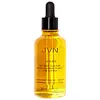What's inside
What's inside
 Key Ingredients
Key Ingredients

 Benefits
Benefits

 Concerns
Concerns

 Ingredients Side-by-side
Ingredients Side-by-side

Water
Skin ConditioningAlcohol Denat.
AntimicrobialDiaminopyrimidine Oxide
Skin ConditioningAmmonium Polyacryloyldimethyl Taurate
Emulsion StabilisingAminomethyl Propanol
BufferingCitric Acid
BufferingPEG-40 Hydrogenated Castor Oil
EmulsifyingPiroctone Olamine
PreservativeCaffeine
Skin ConditioningArginine
MaskingLimonene
PerfumingNiacinamide
SmoothingPyridoxine Hcl
Skin ConditioningLinalool
PerfumingSafflower Glucoside
Benzyl Salicylate
PerfumingCoumarin
PerfumingCitral
PerfumingBenzyl Alcohol
PerfumingXylitylglucoside
HumectantCitronellol
PerfumingBenzyl Benzoate
AntimicrobialAnhydroxylitol
HumectantXylitol
HumectantZingiber Officinale Root Extract
MaskingResveratrol
AntioxidantTocopherol
AntioxidantBHT
AntioxidantSodium Citrate
BufferingParfum
MaskingWater, Alcohol Denat., Diaminopyrimidine Oxide, Ammonium Polyacryloyldimethyl Taurate, Aminomethyl Propanol, Citric Acid, PEG-40 Hydrogenated Castor Oil, Piroctone Olamine, Caffeine, Arginine, Limonene, Niacinamide, Pyridoxine Hcl, Linalool, Safflower Glucoside, Benzyl Salicylate, Coumarin, Citral, Benzyl Alcohol, Xylitylglucoside, Citronellol, Benzyl Benzoate, Anhydroxylitol, Xylitol, Zingiber Officinale Root Extract, Resveratrol, Tocopherol, BHT, Sodium Citrate, Parfum
Squalane
EmollientHydrogenated Farnesene
EmollientBisabolol
MaskingOcimum Basilicum Hairy Root Culture Extract
Skin ConditioningOryza Sativa Bran Extract
Skin ConditioningCocos Nucifera Oil
MaskingCurcuma Longa Root Extract
MaskingHelianthus Annuus Extract
EmollientTocopherol
AntioxidantRosmarinus Officinalis Leaf Extract
AntimicrobialHelianthus Annuus Seed Oil
EmollientMoringa Oleifera Seed Oil
EmollientMelia Azadirachta Flower Extract
Skin ConditioningMelia Azadirachta Bark Extract
AntimicrobialOcimum Sanctum Leaf Extract
Skin ConditioningCorallina Officinalis Extract
Skin ConditioningOcimum Basilicum Flower/Leaf Extract
TonicMelia Azadirachta Extract
Skin ConditioningCitrus Reticulata Peel Oil
MaskingJasminum Officinale Oil
MaskingMelia Azadirachta Leaf Extract
Skin ConditioningParfum
MaskingLimonene
PerfumingLinalool
PerfumingSqualane, Hydrogenated Farnesene, Bisabolol, Ocimum Basilicum Hairy Root Culture Extract, Oryza Sativa Bran Extract, Cocos Nucifera Oil, Curcuma Longa Root Extract, Helianthus Annuus Extract, Tocopherol, Rosmarinus Officinalis Leaf Extract, Helianthus Annuus Seed Oil, Moringa Oleifera Seed Oil, Melia Azadirachta Flower Extract, Melia Azadirachta Bark Extract, Ocimum Sanctum Leaf Extract, Corallina Officinalis Extract, Ocimum Basilicum Flower/Leaf Extract, Melia Azadirachta Extract, Citrus Reticulata Peel Oil, Jasminum Officinale Oil, Melia Azadirachta Leaf Extract, Parfum, Limonene, Linalool
Ingredients Explained
These ingredients are found in both products.
Ingredients higher up in an ingredient list are typically present in a larger amount.
Limonene is a fragrance that adds scent and taste to a formulation.
It's found in the peel oil of citrus fruits and other plants such as lavender and eucalyptus. The scent of limonene is generally described as "sweet citrus".
Limonene acts as an antioxidant, meaning it helps neutralize free radicals.
When exposed to air, oxidized limonene may sensitize the skin. Because of this, limonene is often avoided by people with sensitive skin.
The term 'fragrance' is not regulated in many countries. In many cases, it is up to the brand to define this term. For instance, many brands choose to label themselves as "fragrance-free" because they are not using synthetic fragrances. However, their products may still contain ingredients such as essential oils that are considered a fragrance.
Learn more about LimoneneLinalool is a fragrance and helps add scent to products. It's derived from common plants such as cinnamon, mint, citrus, and lavender.
Like Limonene, this ingredient oxidizes when exposed to air. Oxidized linalool can cause allergies and skin sensitivity.
This ingredient has a scent that is floral, spicy tropical, and citrus-like.
Learn more about LinaloolParfum is a catch-all term for an ingredient or more that is used to give a scent to products.
Also called "fragrance", this ingredient can be a blend of hundreds of chemicals or plant oils. This means every product with "fragrance" or "parfum" in the ingredients list is a different mixture.
For instance, Habanolide is a proprietary trade name for a specific aroma chemical. When used as a fragrance ingredient in cosmetics, most aroma chemicals fall under the broad labeling category of “FRAGRANCE” or “PARFUM” according to EU and US regulations.
The term 'parfum' or 'fragrance' is not regulated in many countries. In many cases, it is up to the brand to define this term.
For instance, many brands choose to label themselves as "fragrance-free" because they are not using synthetic fragrances. However, their products may still contain ingredients such as essential oils that are considered a fragrance by INCI standards.
One example is Calendula flower extract. Calendula is an essential oil that still imparts a scent or 'fragrance'.
Depending on the blend, the ingredients in the mixture can cause allergies and sensitivities on the skin. Some ingredients that are known EU allergens include linalool and citronellol.
Parfum can also be used to mask or cover an unpleasant scent.
The bottom line is: not all fragrances/parfum/ingredients are created equally. If you are worried about fragrances, we recommend taking a closer look at an ingredient. And of course, we always recommend speaking with a professional.
Learn more about ParfumTocopherol (also known as Vitamin E) is a common antioxidant used to help protect the skin from free-radicals and strengthen the skin barrier. It's also fat soluble - this means our skin is great at absorbing it.
Vitamin E also helps keep your natural skin lipids healthy. Your lipid skin barrier naturally consists of lipids, ceramides, and fatty acids. Vitamin E offers extra protection for your skin’s lipid barrier, keeping your skin healthy and nourished.
Another benefit is a bit of UV protection. Vitamin E helps reduce the damage caused by UVB rays. (It should not replace your sunscreen). Combining it with Vitamin C can decrease sunburned cells and hyperpigmentation after UV exposure.
You might have noticed Vitamin E + C often paired together. This is because it is great at stabilizing Vitamin C. Using the two together helps increase the effectiveness of both ingredients.
There are often claims that Vitamin E can reduce/prevent scarring, but these claims haven't been confirmed by scientific research.
Learn more about Tocopherol